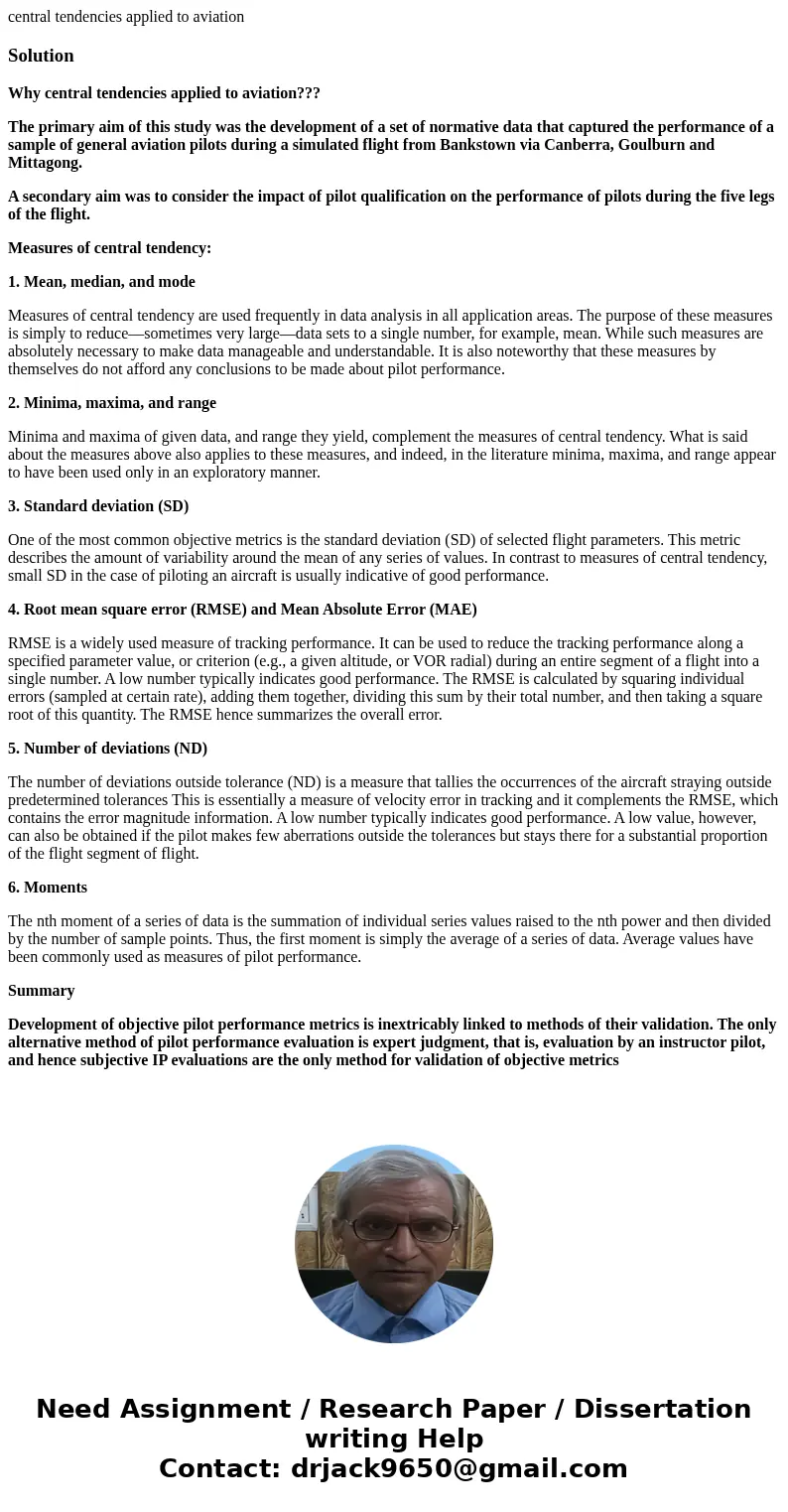central tendencies applied to aviationSolutionWhy central te
central tendencies applied to aviation
Solution
Why central tendencies applied to aviation???
The primary aim of this study was the development of a set of normative data that captured the performance of a sample of general aviation pilots during a simulated flight from Bankstown via Canberra, Goulburn and Mittagong.
A secondary aim was to consider the impact of pilot qualification on the performance of pilots during the five legs of the flight.
Measures of central tendency:
1. Mean, median, and mode
Measures of central tendency are used frequently in data analysis in all application areas. The purpose of these measures is simply to reduce—sometimes very large—data sets to a single number, for example, mean. While such measures are absolutely necessary to make data manageable and understandable. It is also noteworthy that these measures by themselves do not afford any conclusions to be made about pilot performance.
2. Minima, maxima, and range
Minima and maxima of given data, and range they yield, complement the measures of central tendency. What is said about the measures above also applies to these measures, and indeed, in the literature minima, maxima, and range appear to have been used only in an exploratory manner.
3. Standard deviation (SD)
One of the most common objective metrics is the standard deviation (SD) of selected flight parameters. This metric describes the amount of variability around the mean of any series of values. In contrast to measures of central tendency, small SD in the case of piloting an aircraft is usually indicative of good performance.
4. Root mean square error (RMSE) and Mean Absolute Error (MAE)
RMSE is a widely used measure of tracking performance. It can be used to reduce the tracking performance along a specified parameter value, or criterion (e.g., a given altitude, or VOR radial) during an entire segment of a flight into a single number. A low number typically indicates good performance. The RMSE is calculated by squaring individual errors (sampled at certain rate), adding them together, dividing this sum by their total number, and then taking a square root of this quantity. The RMSE hence summarizes the overall error.
5. Number of deviations (ND)
The number of deviations outside tolerance (ND) is a measure that tallies the occurrences of the aircraft straying outside predetermined tolerances This is essentially a measure of velocity error in tracking and it complements the RMSE, which contains the error magnitude information. A low number typically indicates good performance. A low value, however, can also be obtained if the pilot makes few aberrations outside the tolerances but stays there for a substantial proportion of the flight segment of flight.
6. Moments
The nth moment of a series of data is the summation of individual series values raised to the nth power and then divided by the number of sample points. Thus, the first moment is simply the average of a series of data. Average values have been commonly used as measures of pilot performance.
Summary
Development of objective pilot performance metrics is inextricably linked to methods of their validation. The only alternative method of pilot performance evaluation is expert judgment, that is, evaluation by an instructor pilot, and hence subjective IP evaluations are the only method for validation of objective metrics

 Homework Sourse
Homework Sourse